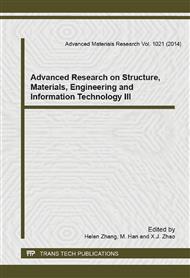p.111
p.115
p.119
p.123
p.128
p.140
p.144
p.148
p.152
Viscous Dampers Utilized at an Operating Electronic Facility for Reducing Seismic Risk
Abstract:
Using supplemental energy dissipation devices into the structure to increase the damping ratio for reducing the responses of seismic activity has become more and more popular. This paper presents a case study of seismic retrofit strategy, utilizing a type of passive energy dissipation device, namely, the viscous damper, in order to make an ongoing chips produced facility resistant to seismic activity. The building in question was a chips produced facility belonging to a semiconductor manufacturing company. This was a double FAB where the structure system was divided into an island building and an RC shell. The retrofit involved installing 44 non-linear dampers between the island building and the RC shell. This was due to the significant differences in the fundamental vibration periods. This paper will present the rationale of making a decision on the parameters of the dampers to give the optimum retrofit strategy.
Info:
Periodical:
Pages:
128-139
Citation:
Online since:
August 2014
Authors:
Price:
Сopyright:
© 2014 Trans Tech Publications Ltd. All Rights Reserved
Share:
Citation:


